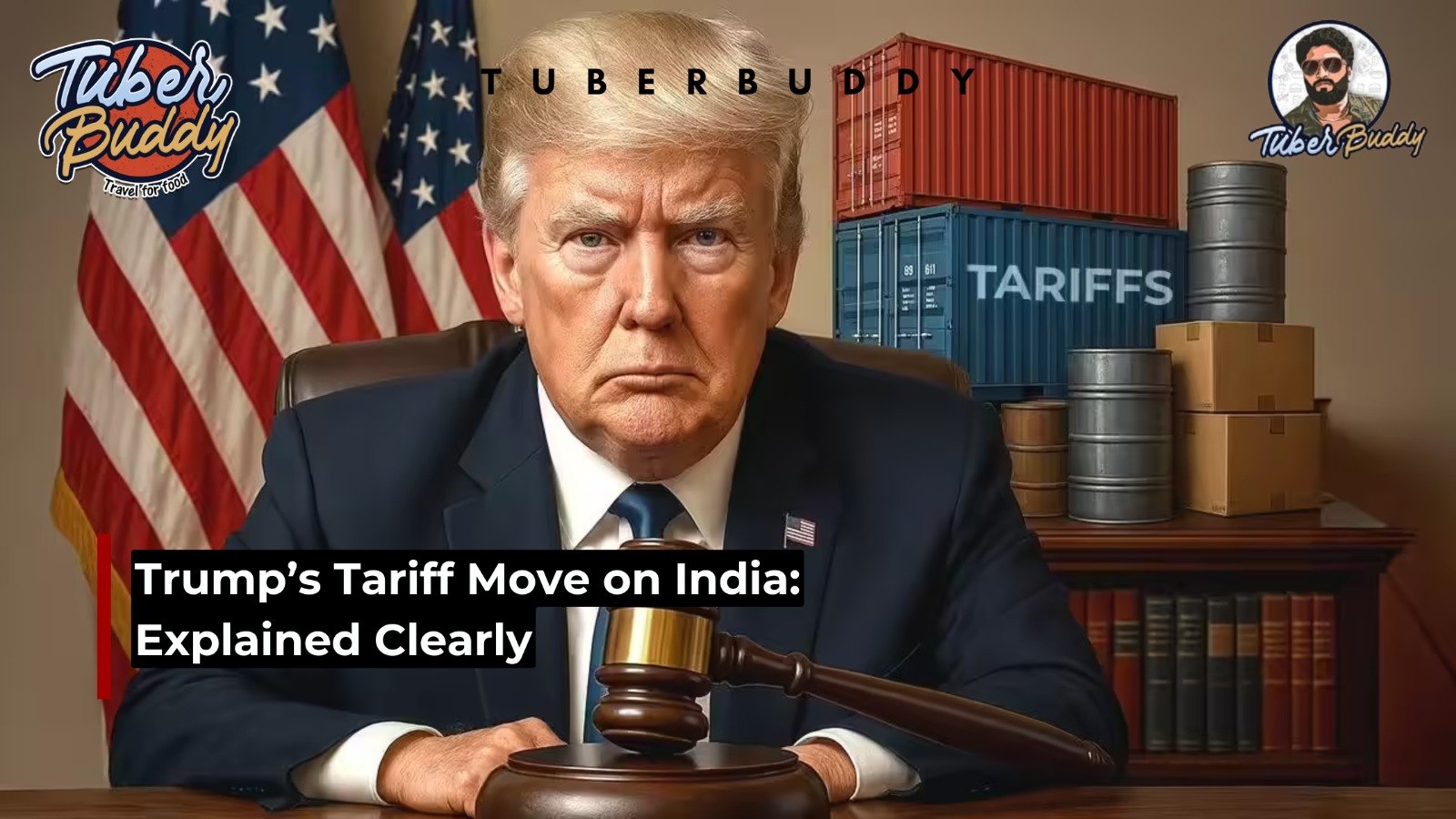Trump’s Tariff Move on India: Explained Clearly

A major update in global trade relations has everyone talking — former U.S. President Donald Trump recently announced a 25% import tariff on certain Indian goods. This decision has sparked concern in India’s export sector and triggered debates across political and economic circles.
But what exactly is a tariff? Why has this decision made headlines? And how will it influence India’s trade relations moving forward?
Let’s break it down in simple terms.
What Is a Tariff?
A tariff is a type of tax that a country places on goods brought in from another country. Governments often use tariffs to protect local industries by making foreign products more expensive — which in turn encourages consumers to buy domestically produced goods.
For example, if the U.S. imposes a 25% tariff on Indian steel, U.S. buyers would pay 25% more than before to purchase that product. This cost increase can discourage imports and give local alternatives an edge in the market.
Why Is Trump’s Tariff on India Trending?
In July 2025, Trump addressed concerns over the U.S.–India trade gap and announced a new 25% import duty on selected Indian products. Though he referred to Prime Minister Narendra Modi as “a friend,” Trump argued that the trade relationship was unbalanced and needed correction.
This announcement immediately gained attention online, with spikes in global search interest and widespread media coverage. Key sectors affected include Indian pharmaceuticals, textiles, steel, and electronics — all of which depend heavily on exports to the U.S.
What Sectors in India Might Be Impacted?
The newly proposed tariff could affect a wide range of industries, including:
- Pharmaceutical exports
- Automotive components
- Iron and steel products
- Textiles and apparel
- Electronics and IT hardware
These sectors generate significant revenue through trade with the U.S., and any increase in import duties could make Indian products less attractive in the American market.
A Look Back: India’s Previous Tariff Disputes
This isn’t India’s first encounter with tariff-related tensions. A few notable events include:
The 2018 Steel Tariff Clash
During Trump’s previous presidency, the U.S. imposed global tariffs on steel and aluminum imports, including from India.
India has been involved in multiple trade disputes under the World Trade Organization framework, especially concerning duties on tech products and solar components.
India’s Domestic Tariff Strategy
To support its “Make in India” initiative, the Indian government has at times increased import duties on electronics, luxury vehicles, and consumer goods to boost local production and reduce foreign dependency.
What Could India Do Next?
India’s Ministry of Commerce has already responded by saying it will “take steps to protect national interests.” The government has several options:
Bilateral Negotiations
India could initiate trade talks with the U.S. to reconsider or reduce the tariff hike.
Counter-Tariffs
India might impose similar duties on U.S. products as a strategic response.
Export Market Diversification
By expanding trade relations with Europe, the Middle East, and Southeast Asia, India can reduce reliance on the U.S. and buffer future risks.
India has a track record of measured and diplomatic responses when it comes to trade issues.
How Does This Affect the Indian Economy?
Though this may appear as a political move, the economic impact is real:
- Exporters may see reduced profits due to decreased competitiveness in the U.S.
- Smaller manufacturers relying on American buyers may face business challenges.
- Investors and stock markets could react negatively, especially in affected sectors.
- Consumers might experience pricing changes on imported or export-linked goods.
However, such challenges also offer opportunities for Indian companies to upgrade quality, improve supply chains, and explore new global partnerships.
The Political Angle
Trump’s decision is not just about economics. With the upcoming U.S. elections, a hardline stance on foreign trade plays well with his voter base. For India, the priority remains maintaining stable trade ties without compromising on growth.
India’s response will likely be calculated — balancing diplomacy with economic strategy to avoid escalation while protecting national interests.
Final Thoughts
The announcement of a 25% tariff on Indian imports by Donald Trump is a significant moment in global trade. While the move poses short-term risks to India’s export-driven sectors, it also reinforces the need for trade diversification and self-reliance.
India has successfully navigated such tensions before and is equipped with the experience and resilience to manage this one as well. With smart policymaking and strategic engagement, the impact can be minimized — or even turned into an opportunity for growth.
Follow TuberBuddy for simplified breakdowns of current events, economic updates, and news that matters — all in one place.
